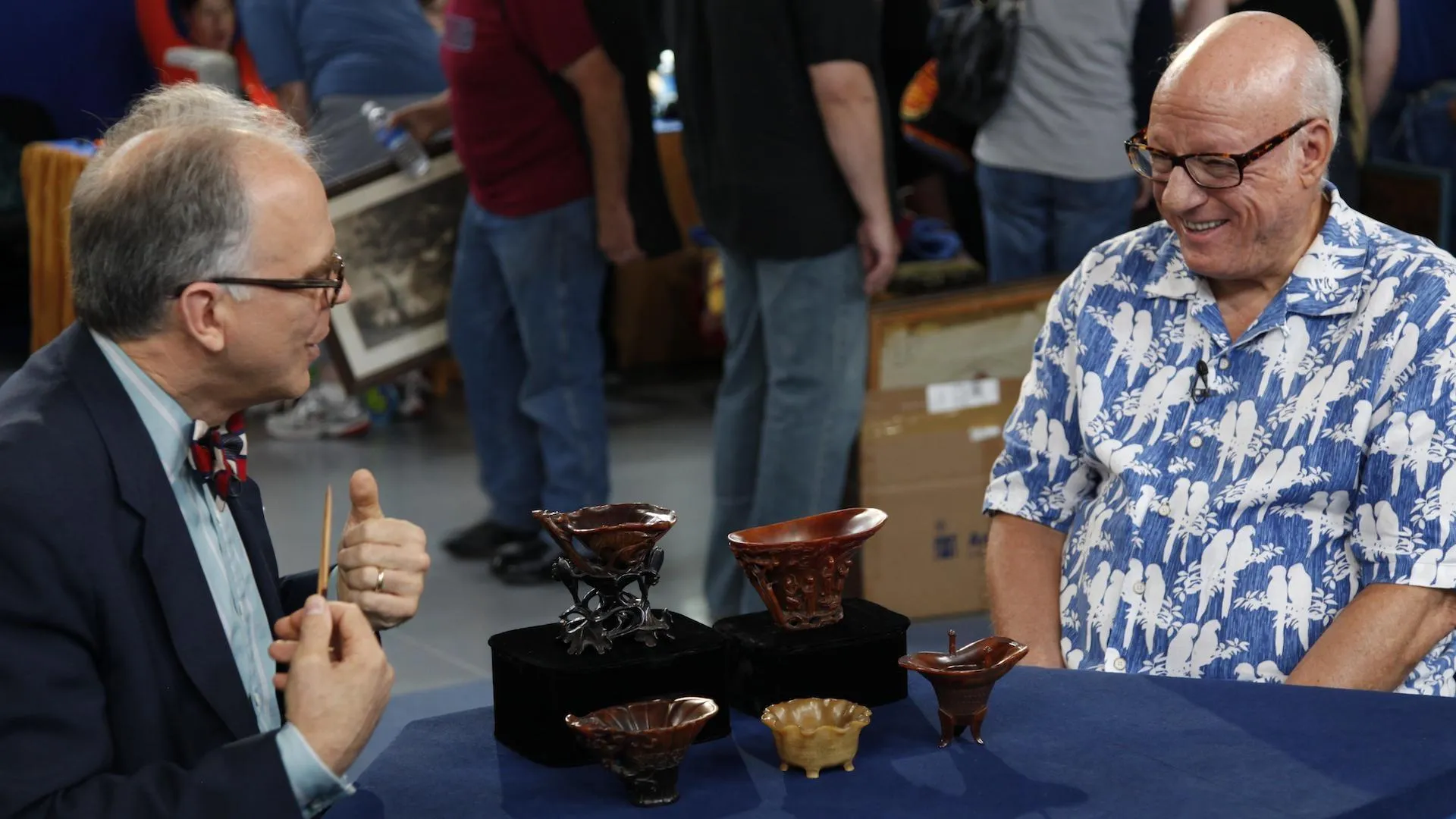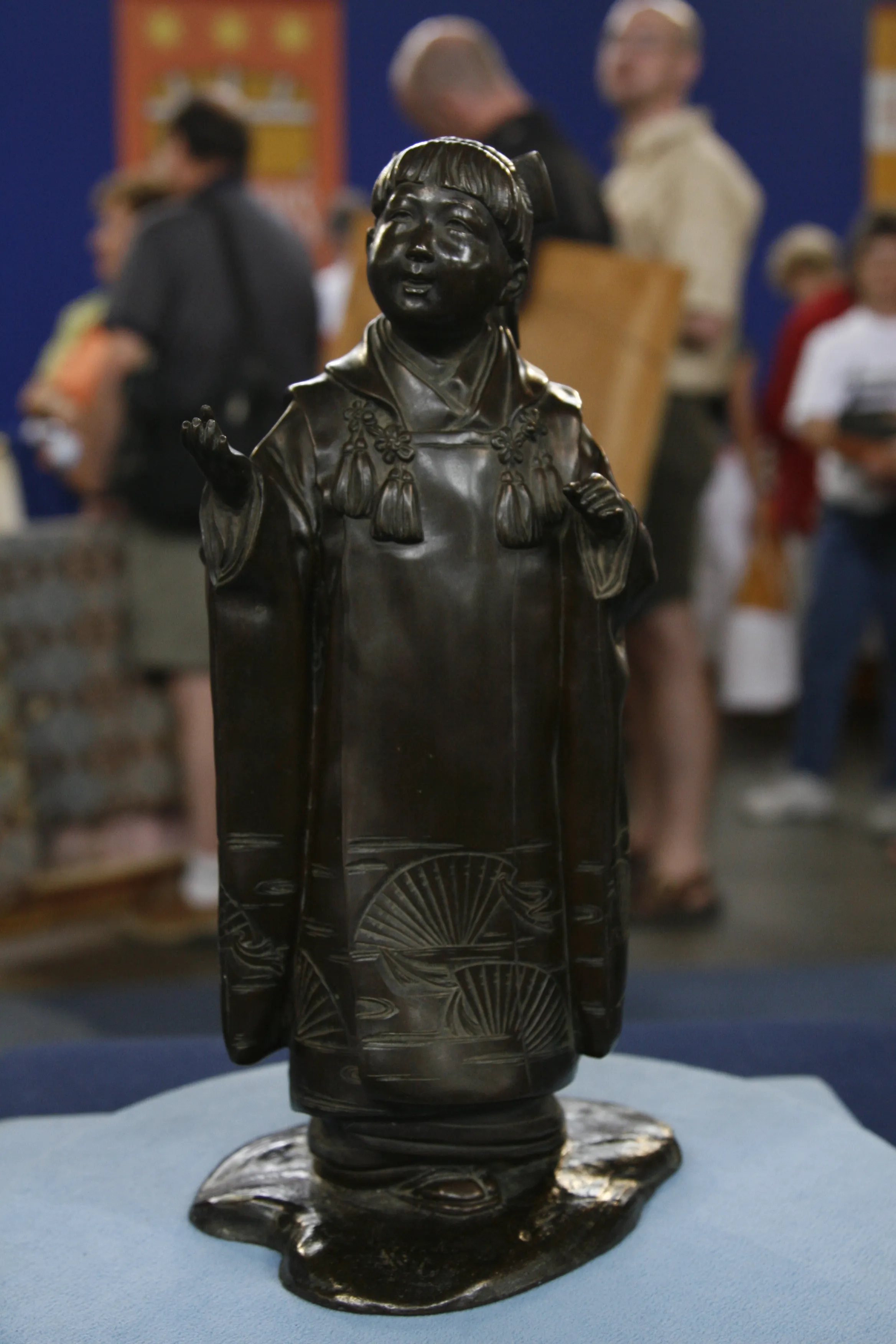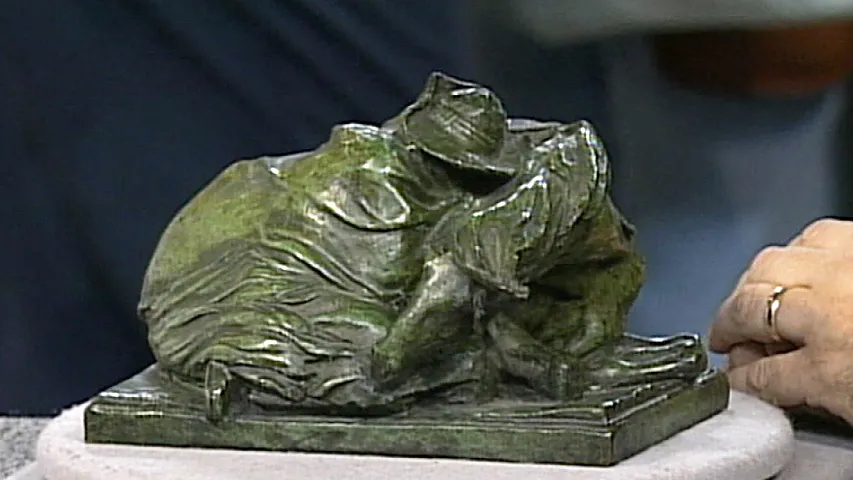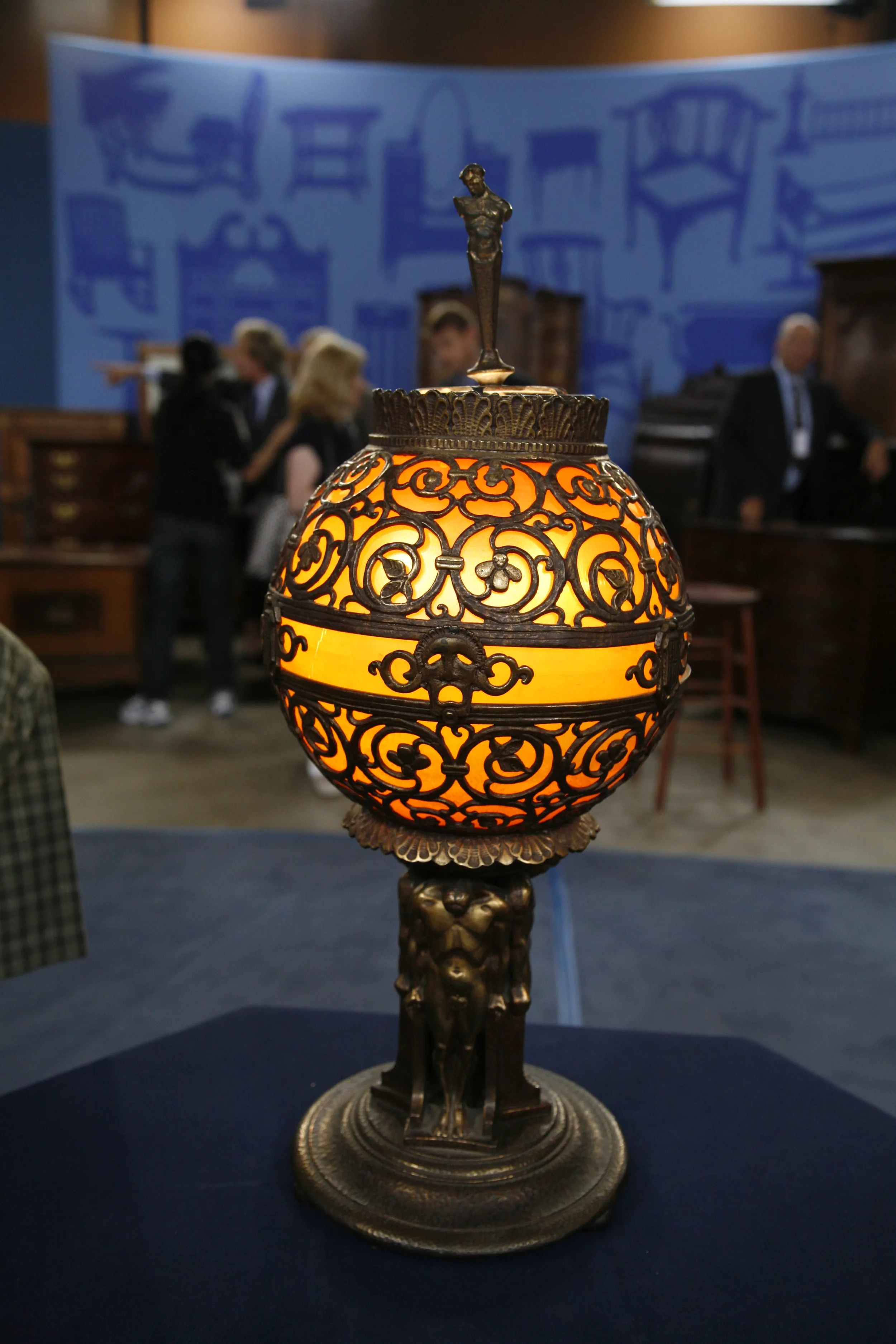GUEST: It was my grandmother's. She lived in Bethlehem, Pennsylvania. Probably about 20 years ago when she died, we all did a round robin and I was the first to choose, and this was my first item.
APPRAISER: Well, I think you chose very well. What we have here is a Tiffany favrile glass shade, which is a blown glass shade, and it is on a bronze harp desk base. And it's got something very special about it, that being the color of the shade, which is a blue. Now, these came in a lot of colors, the glass shades for these lamps, and there's sort of a hierarchy of value. There's the gold shades being usually around the lower end, then the green, which we see a lot of both. But blue, it... we don't come by those very often.
GUEST: Mm-hmm.
APPRAISER: And there are a lot of collectors in the marketplace who actually covet the blue and as a result, they've gone up in value tremendously over the years.
GUEST: Okay.
APPRAISER: It dates from around 1906, was made in New York at the Tiffany studios, which was located in Corona, Queens. Now, there are a couple of condition issues with your lamp. First of all, it's missing a couple of feet on the base,
GUEST: Yes.
APPRAISER: on the underside of the base, and what I think happened is there are little balls on the bottom, and what happens is they're actually screwed in. Oh good, thank you very much. Careful, careful of that shade! And they're actually screwed in, and over the years, the threading in the screws loosens up, and sometimes the balls will fall off. Now you still have the screw there, but you're missing the foot altogether here. Now, this is something that could be fixed. It's not terrible and it's acceptable in the industry to do something like that. But there are two other issues. This is not an original Tiffany switch. So at one point, the threading inside the original Tiffany switch wore out. So this was taken to someone who, in turn, put in this switch, but also didn't do a very good job with the socket below. They took the socket cover off, and so what you have exposed now is the cardboard, which is not the best thing, it's a little dangerous. It's something that should be fixed at some point. Now the other condition issue is... now, your shade, for the most part, is in fabulous condition. But along the opening, what we call the fitter rim, which is located under here, and where there is a signature, it says "L.C. Tiffany", favrile. It's been chewed. It's from lifting the shade, taking it out, putting it in, and these three little pins hold the shade. And so we really have to unscrew these all the way. You have to take the bulb out, you have to unscrew these all the way and sort of jiggle it and take it out very gently. But the good news is you can't see it when it's in the lamp.
GUEST: Right.
APPRAISER: And that's a good thing. Leave the bulb in it, because if for some reason this got loosened up and the shade fell, it would rest on the bulb and it would keep it from falling out. Something like this, in the market today, in the condition it's in, for retail, would sell between $15,000 and $20,000.
GUEST: Cool.
APPRAISER: If it didn't have the chewing around the edge, it could be as much as $25,000, maybe even $30,000. But also, if you get these other parts fixed, it will definitely be retail of at least $20,000.
GUEST: Okay.
APPRAISER: Now, if this were a green shade, maximum, maybe $8,000 to $12,000.
GUEST: Really.
APPRAISER: And, the value of this lamp is... the majority of it is in this shade.
GUEST: Right.
APPRAISER: Once you take this shade off this base, this base is worth about $1,500.
GUEST: Really?











